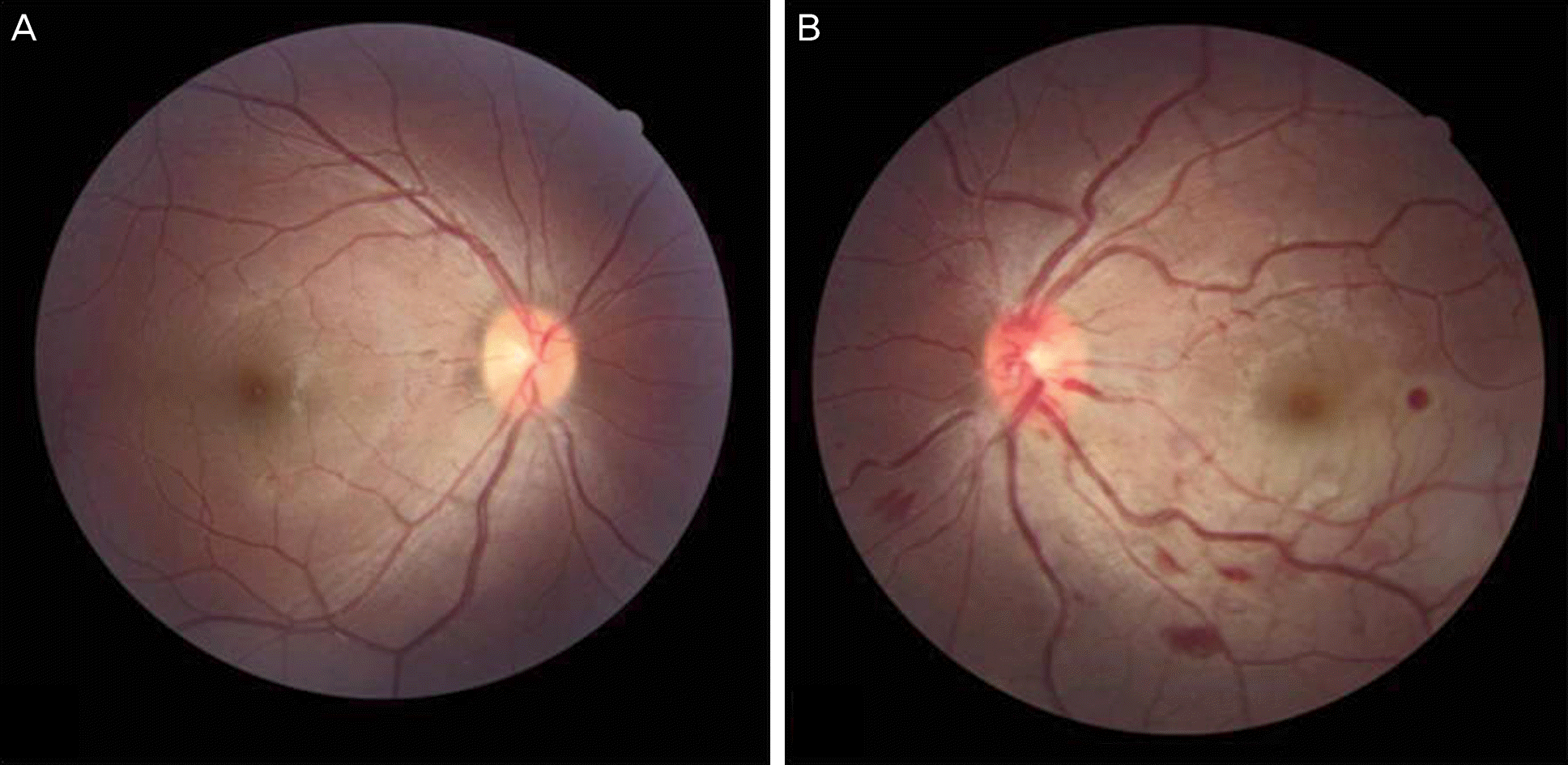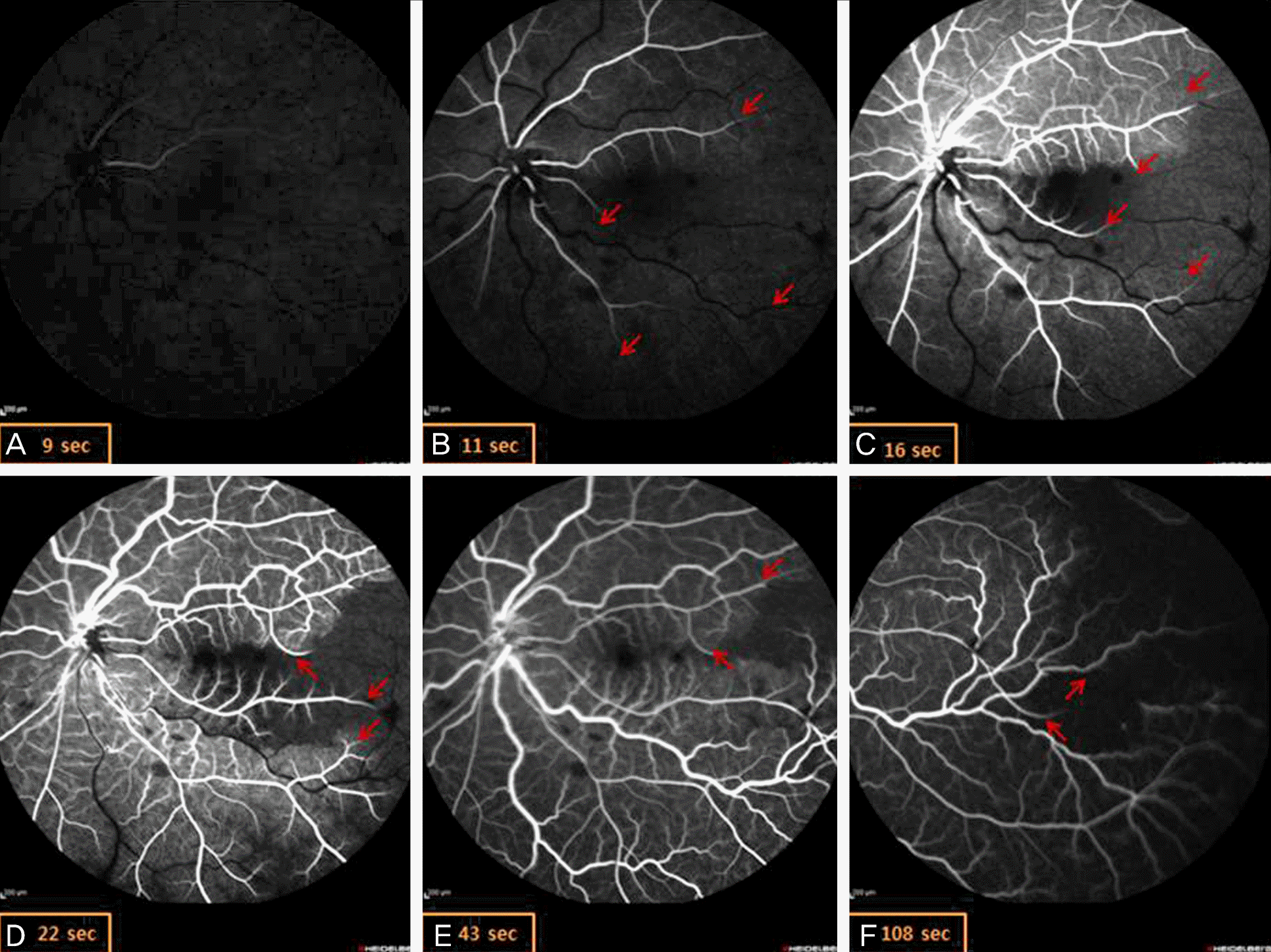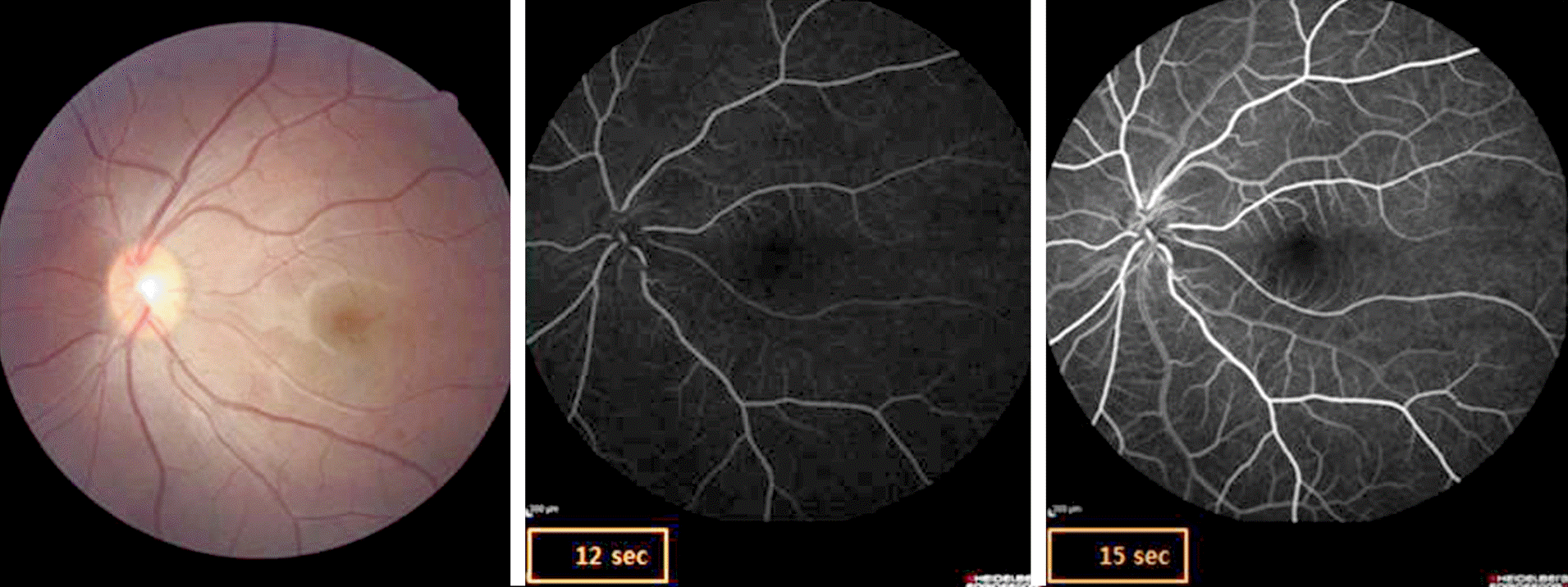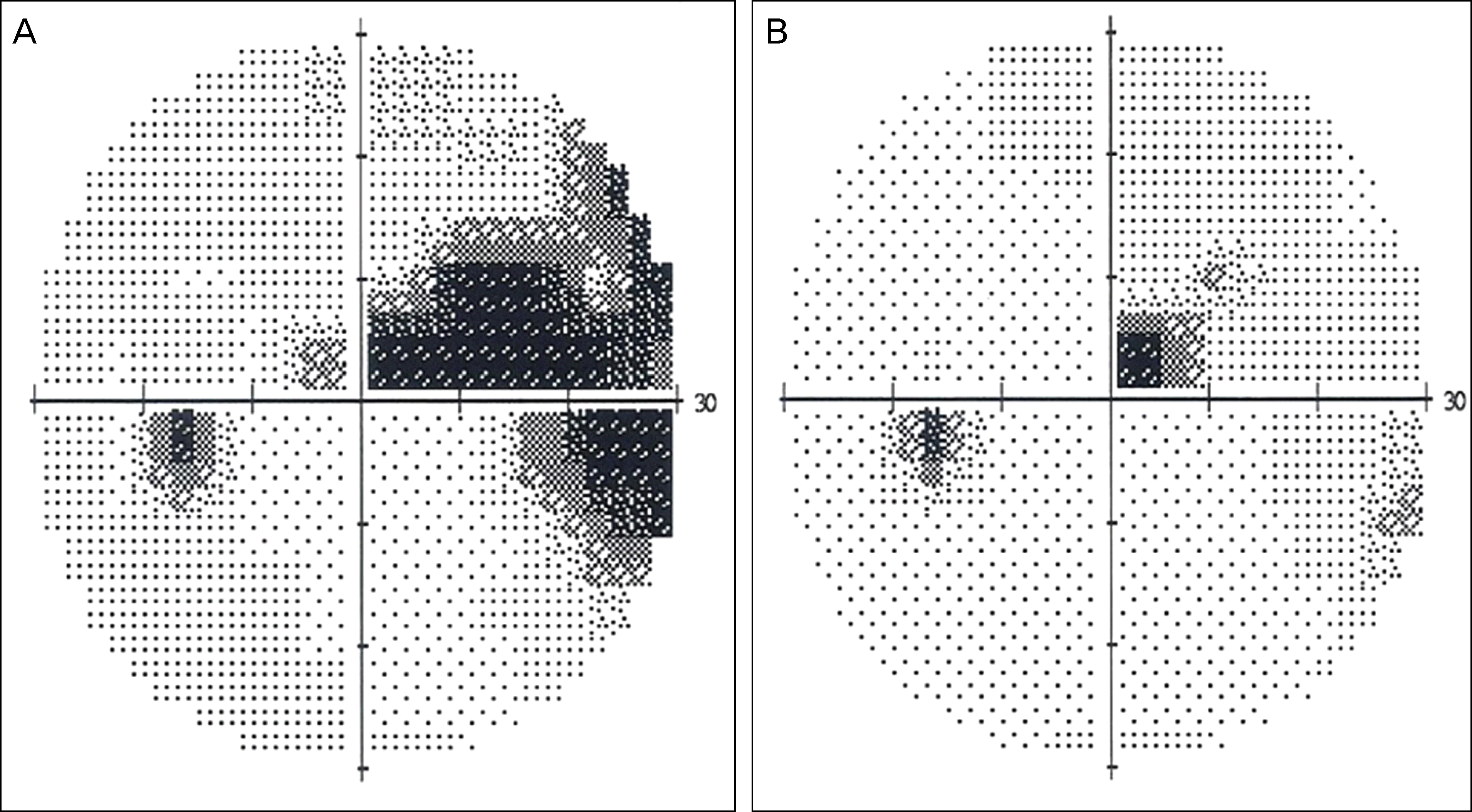Abstract
Purpose
We report a case of branch retinal artery occlusion (BRAO) interconnected with the perifoveal capillaries in a healthy young female.
Case summary
A 16- year- old female presented with sudden loss of vision in her left eye. Upon initial examination, her left visual acuity was 0.02 and intraocular pressure was 31 mm Hg. Fundus examination revealed pallid retinal edema of the inferior posterior pole and retinal hemorrhage below optic disc. Ocular massage followed by anterior chamber para-centesis was performed for 30 minutes within 4 hours after the onset of vision loss. Fluorescein angiography (FAG) showed a very slow blood flow in the superotemporal and inferotemporal retinal arteries and a delay in retinal arteriovenous transit time. We performed hemodynamic tests such as blood pressure, echocardiography, and the hematologic test for thrombogenicity and all tests were normal. At three weeks after treatment, vision in the left eye was 0.7 and FAG revealed normal retinal arterial circulation and venous drainage time.
Go to : 
References
1. Brown GC, Magargal LE, Shields JA. . Retinal arterial obstruction in children and young adults. Ophthalmology. 1981; 88:18–25.

2. Greven CM, Slusher MM, Weaver RG.Retinal arterial occlusions in young adults. Am J Ophthalmol. 1995; 120:776–83.

3. Ratra D, Dhupper M.Retinal arterial occlusions in the young: sys-temic associations in Indian population. Indian J Ophthalmol. 2012; 60:95–100.

4. Manayath GJ, Shah PK, Narendran V, Morris RJ.Idiopathic pedia-tric retinal artery occlusion. Indian J Ophthalmol. 2010; 58:151–2.

5. Ros MA, Magargal LE, Uram M.Branch retinal-artery obstruction: a review of 201 eyes. Ann Ophthalmol. 1989; 21:103–7.
6. Keyser BJ, Duker JS, Brown GC. . Combined central retinal vein occlusion and cilioretinal artery occlusion associated with prolonged retinal arterial filling. Am J Ophthalmol. 1994; 117:308–13.
7. Hayreh SS, Podhajsky PA, Zimmerman MB.Branch retinal artery occlusion: natural history of visual outcome. Ophthalmology. 2009; 116:1188–94.e1-4.
Go to : 
 | Figure 1.Color fundus photography of the right eye shows a normal retina (A), a pale retina along the inferotemporal vascular arcade, mild venous tortuosity, and flame shaped retinal hemorrhages are seen in the left eye (B). |
 | Figure 2.Fluorescent angiography of the left eye after ocular massage. Superotemporal and inferotemporal branch retinal arteries filling is very delayed, whereas the choroidal vascular bed fills normally. Ateriovenous transit time (E-B) is delayed to about 32 seconds. Dye is reached to temporal peripheral area for 2 minutes. Red arrows show the sites of the downstream filling defects. |




 PDF
PDF ePub
ePub Citation
Citation Print
Print




 XML Download
XML Download